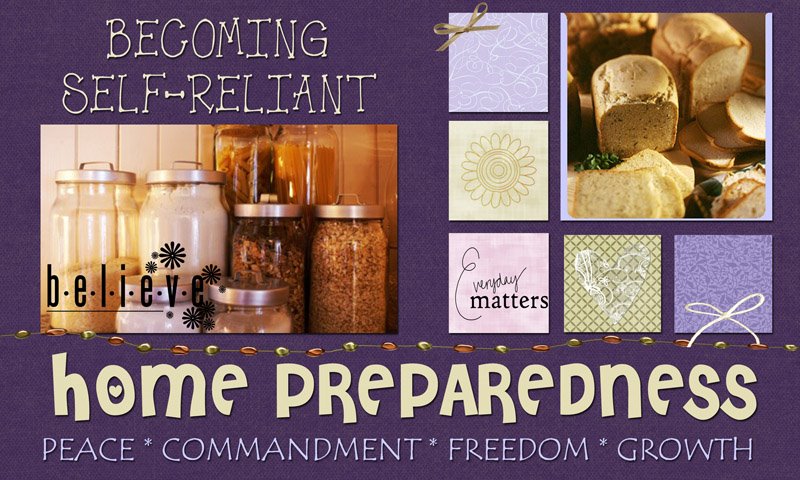"Store drinking water for circumstances in which the water supply may be polluted or disrupted. If water comes directly from a good, pretreated source, then no additional purification is needed; otherwise, pretreat water before use. Store water in sturdy, leak-proof, breakage-resistant containers. Consider using plastic bottles commonly used for juices and soft drinks. Keep water containers away from heat sources and direct sunlight." First Presidency of LDS Church
The approximate requirement of water PER PERSON for only 14 days is 14 gallons (7 gallons for drinking water and 7 gallons for other uses) Storing enough water can be quite difficult! It is also wise to store water purifying agents. Access your room and the ultimate amount you can store to plan your goals. There are a number of containers today that adequately stores water (water barrells of all sizes, jars and re-use bottles, such as 2-liter soda bottles). Note: Do NOT re-use milk jugs, they will not last.
*In emergency cases water can be extracted from items such as waterbeds, water heaters, toilet tanks and cisterns to be purfied and used.

Below are offical Water Storage Guidelines:
Commercially bottled water in PETE (or PET) plastic containers may be purchased. Follow the container’s “best if used by” dates as a rotation guideline. Avoid plastic containers that are not PETE plastic.
If you choose to package water yourself, consider the following guidelines:
- Containers
- Use only food-grade containers. Smaller containers made of PETE plastic or heavier plastic buckets or drums work well.
- Clean, sanitize, and thoroughly rinse all containers prior to use. A sanitizing solution can be prepared by adding 1 teaspoon (5 ml) of liquid household chlorine bleach (5 to 6% sodium hypochlorite) to one quart (1 liter) of water. Only household bleach without thickeners, scents, or additives should be used.
- Do not use plastic milk jugs, because they do not seal well and tend to become brittle over time.
- Do not use containers previously used to store non-food products.
Water Pretreatment
- Water from a chlorinated municipal water supply does not need further treatment when stored in clean, food-grade containers.
- Non-chlorinated water should be treated with bleach. Add 1/8 of a teaspoon (8 drops) of liquid household chlorine bleach (5 to 6% sodium hypochlorite) for every gallon (4 liters) of water. Only household bleach without thickeners, scents, or additives should be used.
Storage
- Containers should be emptied and refilled regularly.
- Store water only where potential leakage would not damage your home or apartment.
- Protect stored water from light and heat. Some containers may also require protection from freezing.
- The taste of stored water can be improved by pouring it back and forth between two containers before use.

